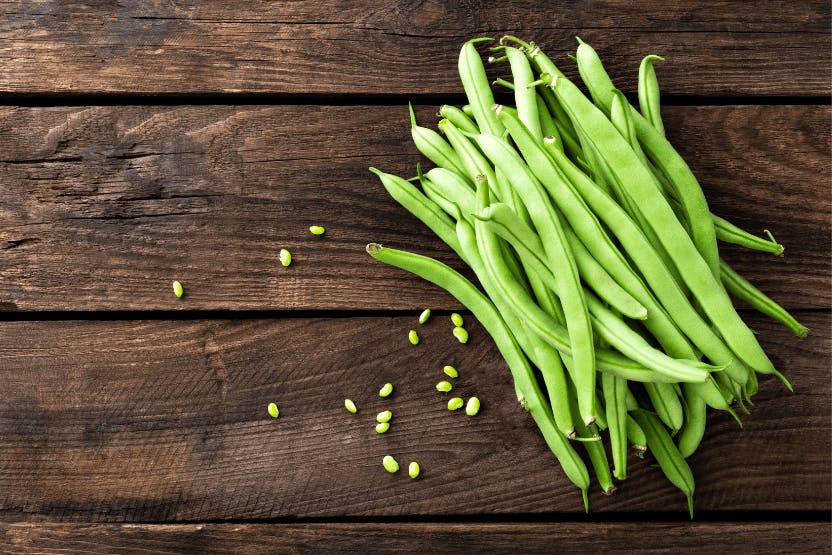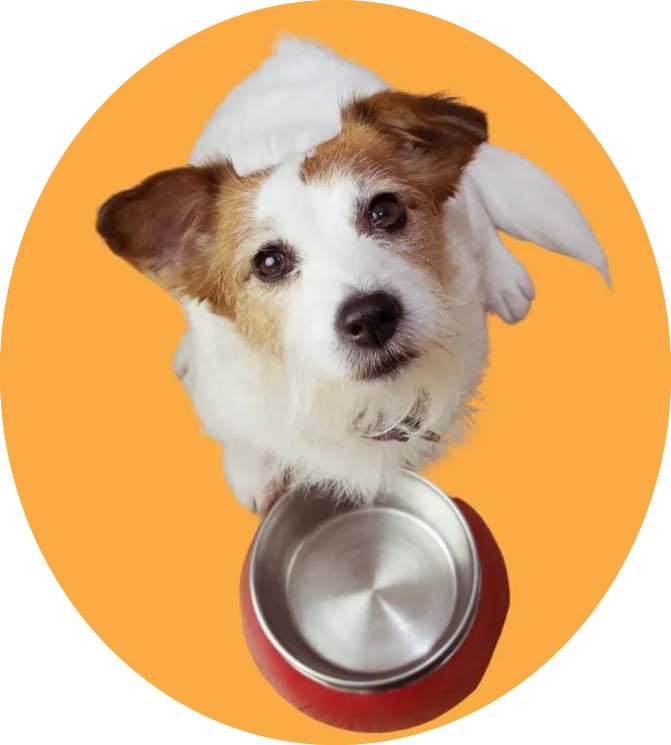
By Wag! Staff
Published: 11/20/2022, edited: 06/14/2024
Reviewed by a licensed veterinary professional: Dr. Linda Simon, MVB MRCVS
More articles by Wag! Staff
Save on pet insurance for your pet
You don't have to choose between your pet and your wallet when it comes to expensive vet visits. Prepare ahead of time for unexpected vet bills by finding the pawfect pet insurance.
Overview
Maybe you’ve caught your child slipping their vegetables to your dog under the table or you simply want to share a bite while you’re preparing dinner — in these situations, pet parents will want to know, can dogs eat green beans?
The answer is yes, they definitely can. Green beans aren’t toxic to dogs and some veterinarians even recommend them as a healthy replacement for traditional dog treats.
Read on to find out how to feed green beans to your dog safely, the health benefits of doing so, and other key takeaways, including:
- Green beans are safe for dogs to eat provided they are plain and unseasoned
- They can be given to your raw or cooked, although they should be cut down to manageable sizes
- Canned green beans can be OK as long as extra salt hasn’t been added to the mix
- Not only can dogs eat green beans, but they’re good for them, too — the vegetable is a top source of vitamins, minerals and fiber
- Parents should never give dogs human foods containing green beans, such as green bean casserole
- Although green beans are certainly healthy, they should never form more than 10% of a dog’s diet
Are Green Beans Good For Dogs?
Whether you like the taste of them or not, most people know that green beans are good for your health. The same is true for dogs — and here’s why.
They Promote a Healthy Weight
A shocking 59% of dogs in America are considered overweight. Obesity in dogs is linked to health problems like arthritis, high blood pressure, cancer, diabetes, and heart failure.
Foods like green beans can be massively helpful in keeping a dog’s weight at a healthy level. Not only are they low in calories, but they’re high in fiber, too — this’ll help keep your dog feeling fuller for longer.
Swapping out the treats or table scraps for some green beans could help your dog reach a healthy weight.
They're a Good Source of Protein
Dogs need a minimum of 18% to 28% crude protein in their diet depending on their age. This helps them maintain healthy bones, organs, muscles, and fur.
Green beans contain close to 2g of protein in every 100g, which will contribute towards your dog’s daily needs. It should be noted that plant proteins are not a complete protein as they lack some amino acids (like Taurine), so they can’t replace the meat that your dog needs in their diet. However, it’s a useful supplementary source.
They’re Packed with Essential Vitamins and Minerals
Green beans contain a wealth of vitamins and minerals that will help support your dog’s health. For example, Vitamin C can boost their immune system, Vitamin K helps blood clots to form when needed, and Vitamin E has antioxidant qualities to help counteract the effects of cell damage and aging.
- Vitamin C: 12.1 mg
- Vitamin K: 60 mcg
- Thiamin: 0.1 mg
- Niacin (Vitamin B3)
- Vitamin B-6: 0.07 mg
- Vitamin E: 0.58 mg
- Calcium: 55 mg
- Iron: 0.812 mg
- Magnesium: 22.5 mg
- Phosphorous: 36.2 mg
- Potassium: 182 mg
- Zinc: 0.31 mg
How Can I Feed Green Beans To My Dog?
Now that we’ve established that green beans are a vegetable that can make a positive contribution to a dog’s diet, parents will want to know how they can feed them to their pet.
Whichever way you choose, parents should start with a small amount of green beans to see if their dog likes the taste and their body tolerates the ingredient well. Once parents can see this is the case, they can continue adding green beans to their dog’s diet.
However, don’t go too overboard. Parents should view green beans as a treat or topper — that means they shouldn’t make up more than 10% of their dog’s caloric intake.
Can Dogs Eat Raw Green Beans?
It’s OK to give dogs raw green beans and there’s an argument that this is the most nutritious form, as cooking can reduce some of the nutrient and vitamin levels slightly.
Be sure to wash raw green beans, cut the stringy ends off and chop them into smaller chunks to prevent choking. Just like humans, some dogs will love the crunch and sweet taste of raw green beans, but others will turn their nose up at them.
Can Dogs Eat Cooked Green Beans?
Dogs can eat cooked green beans providing they’re plain and unseasoned. Although the cooking process lowers the vitamin content slightly, it does make the vegetable more digestible and more palatable for some dogs.
Again, parents need to cut beans into bite-sized pieces for dogs to eat.
Can Dogs Eat Canned Green Beans?
Much like raw or cooked green beans, dogs can eat canned green beans, but only if they’re completely plain and unseasoned. Unfortunately, canned green beans can often contain a lot of added salt, which can be unhealthy for a dog’s body.
Check the packaging of canned green beans to check there isn’t added salt — if there isn’t, they’re safe to feed to dogs.
Can dogs eat green bean casserole?
Green bean casserole is a holiday favorite, but it should never be shared with dogs, no matter how nicely they ask. The dish usually contains onions and garlic, which are toxic to dogs in large amounts. Cream is hard for dogs to digest and can lead to stomach upset, while the salt, sugar and fat levels present might be harmful.
In general, it’s best practice not to give your dog table scraps. However, you can set aside some raw or cooked green beans (unseasoned of course) if you want to include them in the celebration.
Is the green bean diet safe for dogs?
The green bean diet was designed to help overweight dogs shed a couple of pounds. The idea is to begin by replacing 10% of their diet with green beans and gradually increasing to 50%. Once your dog has reached their goal weight, parents would reduce the green beans back down to just being a supplement or treat.
While it could be effective for losing weight, the problem with the green bean diet is that your dog could start missing out on important nutrients not found in green beans, like certain amino acids, fats, vitamins and minerals.
It’s also not advised to put your dog on any weight loss program without consulting your vet first. Their weight could be caused by something other than their diet, such as diabetes, hypothyroidism, or another serious health problem.
Overall, green beans can be a great option as a healthy treat. They're low in calories and nutrient-dense, but be sure to only serve them plain and in moderation.
Giving your dog the right diet is one way you can look out for their wellbeing — taking out a good pet insurance policy will ensure they receive expert care when they need it most, too
You may also like
